As an SEO manager, it’s your job to provide ranking opportunities to your business. One of the irreplaceable foundations of any successful search and content strategy is actionable keyword research.
It’s one of the most focused ways for any SEO professional to understand the potential for improved search visibility, increased rankings and organic traffic growth. But does size really matter? The current argument is to focus on long-tail and ignore the short-tail keyword; particularly if you’re a small-to-medium sized business.
Whilst long-tail keywords are great for hyper-focused content with low competition, it’s also typically low volume. By overlooking the benefits of head (or short-tail) keywords, we overlook the potential to capture high-volumes of users at the awareness stage.
Instead of trying to focus your efforts on a single avenue, it would prove beneficial to take a more holistic approach on both long and short-tail keywords.
Long-tail keywords: Low volumes of traffic + highly focused search intent = Higher conversion rate
Head keywords: High search volumes + broad search intent = Greater awareness
Building relevance with long-tail keywords
The great thing about long-tail keywords is that they are conversational. You could focus your content on a logical structure of questions which, in turn, would help you build relevance around your target topic.
And, as we move towards a world where voice search is highly important, it pays to cater for this conversational shift in the search landscape.
Let’s imagine your business sells camping equipment.

(UK search volumes taken from Ahrefs)
Now, let’s look at who ranks for that term:
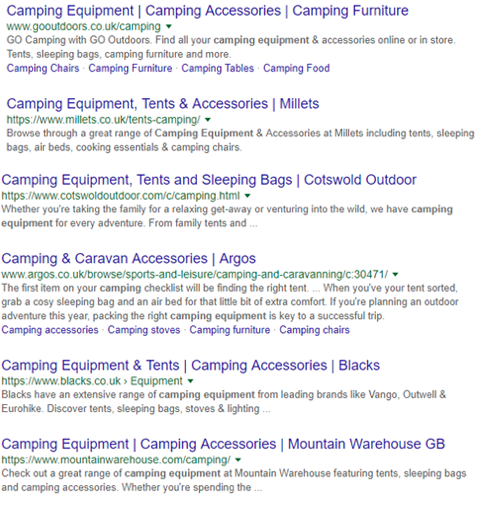
Even without looking into the site metrics, we know that ranking for this term at the awareness stage will take a lot of work.
This is where long-tail keywords are important. They offer a real opportunity for first-page rankings which will improve your site’s relevancy over time. Ultimately helping ‘move the needle’ for your site’s short-tail keywords.
As your longer-tail keywords begin ranking higher in the SERPs, you start to build authority around your main term (in our example, it's camping equipment). We can then further utilise this long-tail relevancy by building internal links using LSI and exact match anchor text to send additional signals to Google; giving a greater indication of that pages' value.
The depth of your supporting content and linking strategy will eventually begin to influence how well your head keyword ranks. This will not be an overnight success, however, if you trust the process and continue to build authority, you will see positive movements over time.
Short-term interim wins, for long-term search progression
Google’s crawler assesses whether they can consider you a reliable source for ‘camping equipment’ by establishing your authority on the topic. Authority is built by providing as much topical value to the user as possible.
So, let’s take our short-tail keyword and create long-tail phrases which could help increase relevancy and act as supporting pages:
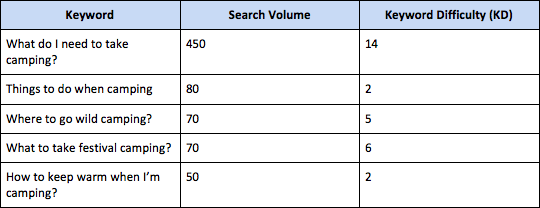
Each of the long-tail keywords could be treated as a potential content idea. Within each piece of content, naturally, there will be related phrases and terms. And, because there is little competition, it provides an opportunity to rank higher for a larger group of relevant keywords.
Patience is key with any SEO campaign so, keep this in mind as you begin mapping out your keywords to your content calendar.
Here’s a visual representation of how this could work:
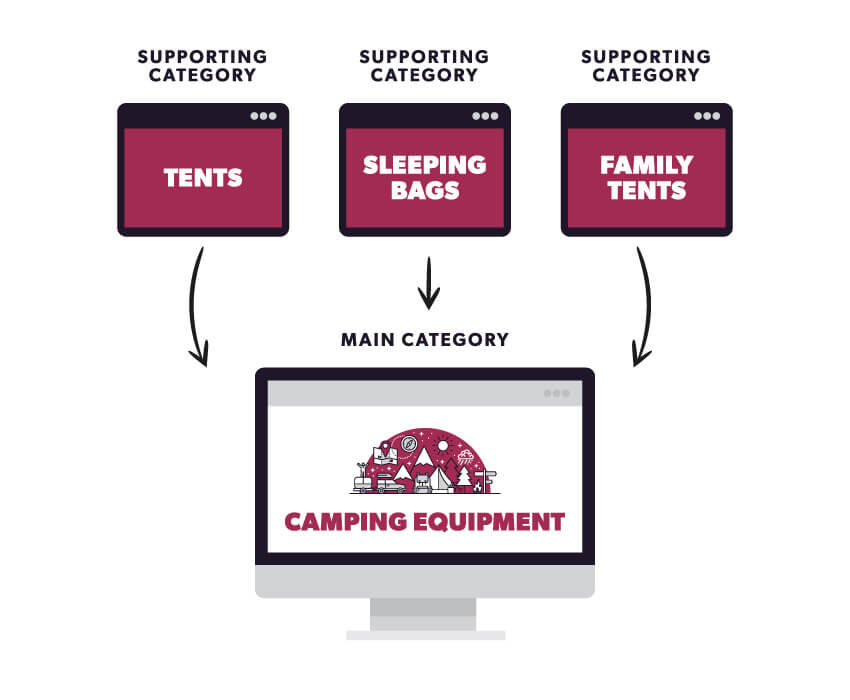
Using keyword difficulty to gauge opportunity
Keyword search volume and difficulty on an individual basis doesn’t paint a clear picture of the SERPs. To establish where the true opportunity is, we need to calculate the max traffic available (per keyword group) vs average keyword difficulty.
There are different tools you can use to find keyword difficulty, but at Zazzle Media we prefer to use Ahrefs. Their calculations are based on the following ranking factors:
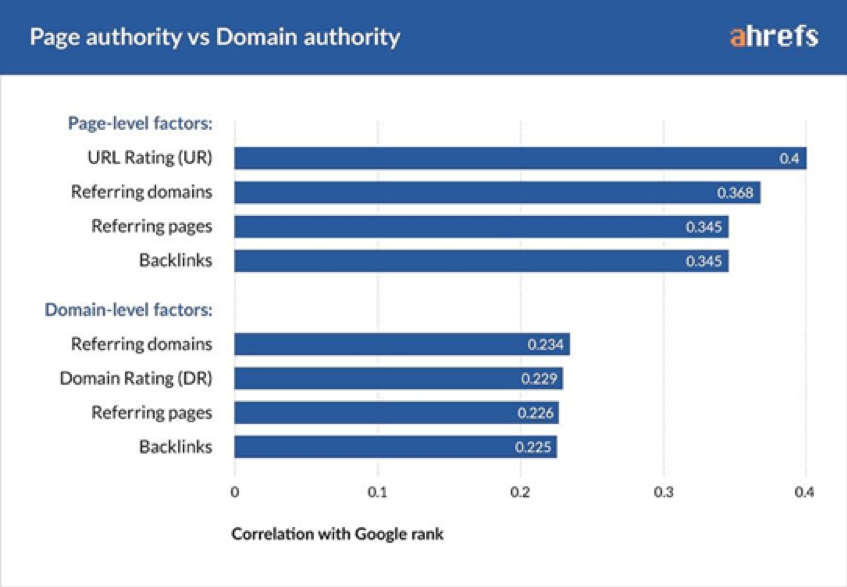
We can safely assume that the keyword difficulty metric directly correlates to the overall link profile of a site.
To break it down further, here’s Ahrefs own explanation on how they calculate keyword difficulty.
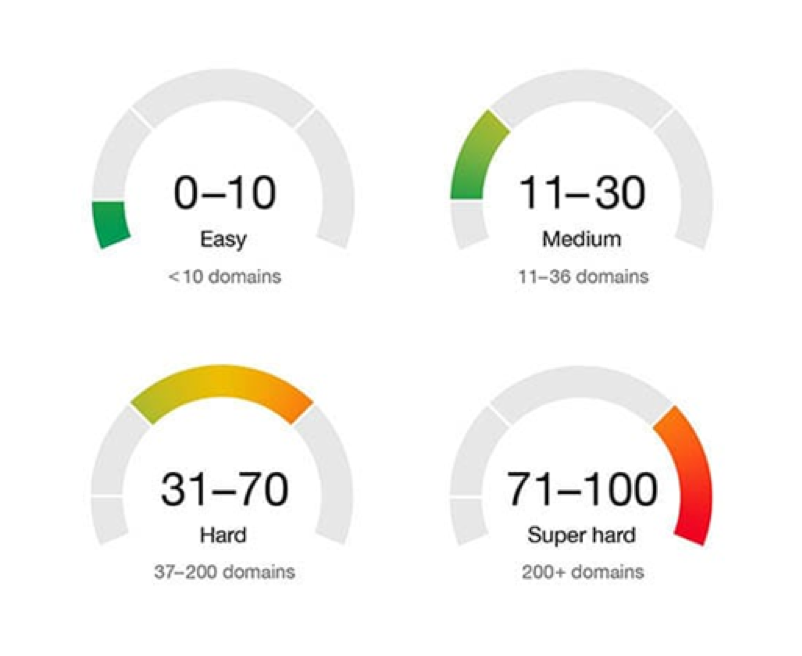
This will help highlight, at a glance, where the focus should be for a keyword group. If we stick to camping and then broke it down into sections:
- Tents
- Mattresses
- Sleeping bags
- Cooking
We would look for a category which has a low-to-average keyword difficulty, but which has higher search volumes. This offers us both opportunities to rank and to capture traffic. Check out our in-depth guide on how to highlight search opportunity to perfect your content marketing strategy.
We also have an important tool you can use to calculate your keyword difficulty, and opportunities you can claim from that - read the full post over on Search Engine Watch and download to get started.
Which keyword is best for search intent?
Once you’ve established where your opportunity is, you need to map your keywords out across the buyer’s journey to understand how your website can satisfy user intent.
According to Google, there are four micro-moments in the consumer journey. They’re known as:
- I-want-to-know moments
- I-want-to-go moments
- I-want-to-do moments
- I-want-to-buy moments
Short tail keywords are used in the early stages of the user decision-making process - broad, non-specific queries used to study the search landscape. During this phase, your on-page SEO and copywriting plays a huge part in capturing the user’s attention to prevent them from pogo-sticking back to the search page.
This is where short tail keywords can suffer, and where long-tail queries perform best.
Long-tail phrases are used during the moments before purchase (I-want-to-buy moments) and informational (I-want-to-know) queries which account for up to 70% of searches made online.
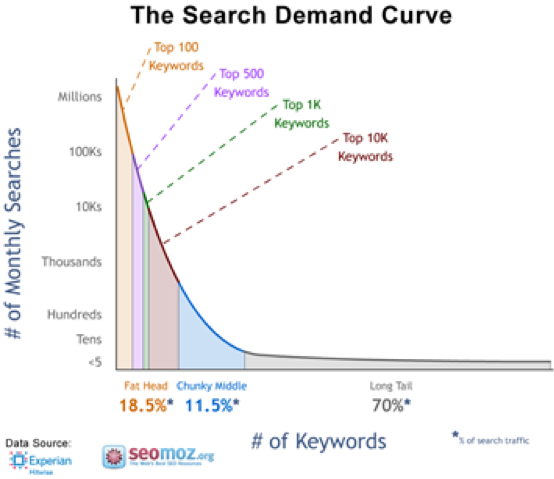
For example:
‘2-man waterproof tent’ is a very specific ‘I-want-to-buy’ moment. The user intent is clear. And, if we look at the keyword difficulty for that term:

Competition is low.
And, whilst the search volume is low, ranking high for this keyword will mean you’ll be reaching 150, highly-specific users at the end of the buyer journey. An opportune moment for your business to convert.
Or, if we target an ‘I-want-to-know’ query, we could go for something like ‘what is the best family tent for camping’.

An opportunity to review the best family tents your business has on offer and to then internally link to those pages: passing through topical relevance to your product pages.
Conclusion
Both short-tail and long-tail keywords have their purposes, which is why you should create a content strategy which caters for both. Always remember to consider search intent throughout your keyword research and map your content accordingly.
Sign up for our monthly newsletter and follow us on social media for the latest news.





 Proudly part of IPG Mediabrands
Proudly part of IPG Mediabrands